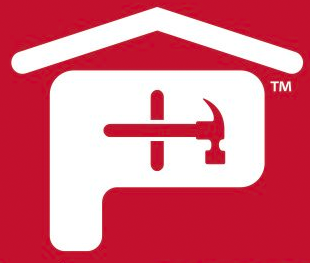A healthy roof is arguably the primary protector of everyone and everything in a house. The roof system is a complex system involving the deck, underlayment, shingles, and ventilation control. These components must be kept in good condition and it is necessary to know what to look for to give them the best care. To help you with this, here are 10 questions to form the framework of your roof care regimen.
Q: How often should my roof have a checkup?
Roof Doctor: Different roof types fail at differing rates. Is the failure due to missing shingles? Does the roof leak in numerous locations? Could the existing roof be covered with new shingles? The answers to these and other questions can be found by having a professional roof inspection performed annually. This will find any problems in early stages so that major damage can be avoided.
Q: Why do I need to hire a roof inspector when I can do it myself?
Roof Doctor: You could begin the process by examining the interior attic areas yourself, but leave the exterior on-roof inspection to a licensed professional roofing contractor. He is experienced in knowing what to look for and how to safely walk on a roof. Both tasks are not as easy as they look.
Q: Are my rising energy costs and moisture in the attic related?
Roof Doctor: It could be a breathing issue. Ventilation extends the life of a roof because it minimizes the temperature differential between the attic and the outside air. An inefficient ventilation system can raise energy costs, damage roof system components, cause ice dams, and ruin items stored in an attic. The Techni-Flo™ Roof Ventilation System, manufactured by Atlas Roofing allows consistent intake and exhaust airflow in a steeped-sloped roofing system.
Q: Water is leaking into my house, but I can’t see any damage, such as holes or missing shingles. What could cause this?
Roof Doctor: When heat rises into an attic the roof is warmed, except at the eaves. Snow will melt on a roof, but the water freezes on those cold eaves. Ice forms along the eaves and creates an ice dam. The melted water can't drain and backs up under the shingles. Eventually it enters the house. Some homeowners will try electric gutter melt radiant heat systems to prevent ice dams. However, the initial cost of the system and the monthly energy use usually proves to be expensive. For the long run it may be less expensive to install a new roof with an underlayment that will prevent ice dams.
Q: How can I repair hail damage to my roof and prevent it from happening again?
Roof Doctor: If the roof is severely damaged, then it will have to be replaced. To prevent hail damage from ruining your next roof, consider StormMaster® Shake or Slate, both Class 4 impact-resistant lines of roofing shingles from Atlas Roofing. With a 130 mph limited lifetime warranty, they are able to withstand the force of a 2” hailstone.
Q: Is it worth the cost to replace a faded and crumbling cedar wood shake roof?
Roof Doctor: Cedar wood shakes may look great, but are very expensive to buy, install, and maintain. However, the most serious reason cedar wood shakes and wood shingles should be avoided is that they are a dangerous fire hazard. Even though some are treated with a fire retardant, that retardant deteriorates over time. There are less costly and safer alternatives.
Q: Can I have new architectural shingles installed over 10-year-old shingles?
Roof Doctor: If the roof is just old, but still functions as an adequate cover for the house, a re-cover is possible. It should not be missing any shingles nor had any extensive, long-term leaks. If the roof has reached failure point, covering it with new shingles would just be a waste of time and money, and only postpone the inevitable installation of a new roof. Consult a professional roof inspector first.
Q: A house I want to buy has dark streaks and stains on its roof. Houses nearby have this condition too. What causes this?
Roof Doctor: A type of algae that lives off minerals in roof shingles causes the discoloration. Algae feed on the limestone filler that gives an asphalt shingle its weight. This causes loss of surface granules every time it rains. That reduces a roof’s ability to reflect sunlight, which results in overheating. Algae spores are spread by wind and wildlife so one roof with algae will slowly infest an entire neighborhood. Atlas Roofing produces algae resistant shingles marketed under the name Pinnacle® Pristine, StormMaster® Slate, and StormMaster® Shake. They contain Scotchgard™ Protector and are guaranteed to resist algae and retain the shingle’s color for up to 20 years.
Q: During a recent thunderstorm, some shingles on my roof were flapping in the heavy wind. Since I live in a region prone to hurricanes should I have my shingles re-nailed?
Roof Doctor: Re-nailing may be possible, but most likely the roof will need to be replaced. A durable roof is the first line of defense against all storms. Loss of even one section of roof sheathing in a storm can result in severe damage. Atlas Roofing warrantees its StormMaster® and Pinnacle® shingles to withstand winds up to 130 mph. Consult a professional roofing contractor.
Q: I am self-installing a new roof on my house. To save money, can I use house wrap as underlayment?
Roof Doctor: Real roof underlayment is much thicker than house wrap. Even though house wrap is similar in appearance to synthetic underlayment, it does not meet roofing code underlayment requirements. House wrap installed as underlayment is a defective installation.
The questions asked above are the basis for a continuing dialogue you should have with a roofing care professional. Qualified and experienced roofing contractors are the best roof doctors. Visit www.selectyourroof.com to find one near you.




 Gear!
Gear! PRO LOGIN
PRO LOGIN